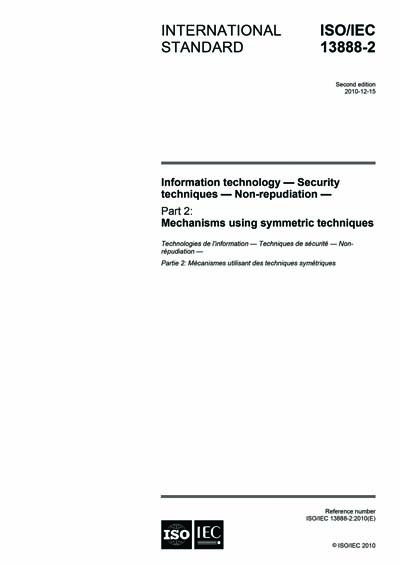Most recent
ISO/IEC 13888-2:2010
Information technology - Security techniques - Non-repudiation - Part 2: Mechanisms using symmetric techniques
The goal of the non-repudiation service is to generate, collect, maintain, make available and validate evidence concerning a claimed event or action in order to resolve disputes about the occurrence or non-occurrence of the event or action. ISO/IEC 13888-2:2010 provides descriptions of generic structures that can be used for non-repudiation services, and of some specific communication-related mechanisms which can be used to provide non-repudiation of origin (NRO) and non-repudiation of delivery (NRD). Other non-repudiation services can be built using the generic structures described in ISO/IEC 13888-2:2010 in order to meet the requirements defined by the security policy.
ISO/IEC 13888-2:2010 relies on the existence of a trusted third party (TTP) to prevent fraudulent repudiation or accusation. Usually, an online TTP is needed.
Non-repudiation can only be provided within the context of a clearly defined security policy for a particular application and its legal environment. Non-repudiation policies are defined in ISO/IEC 10181-4.
International Organization for Standardization [iso]

